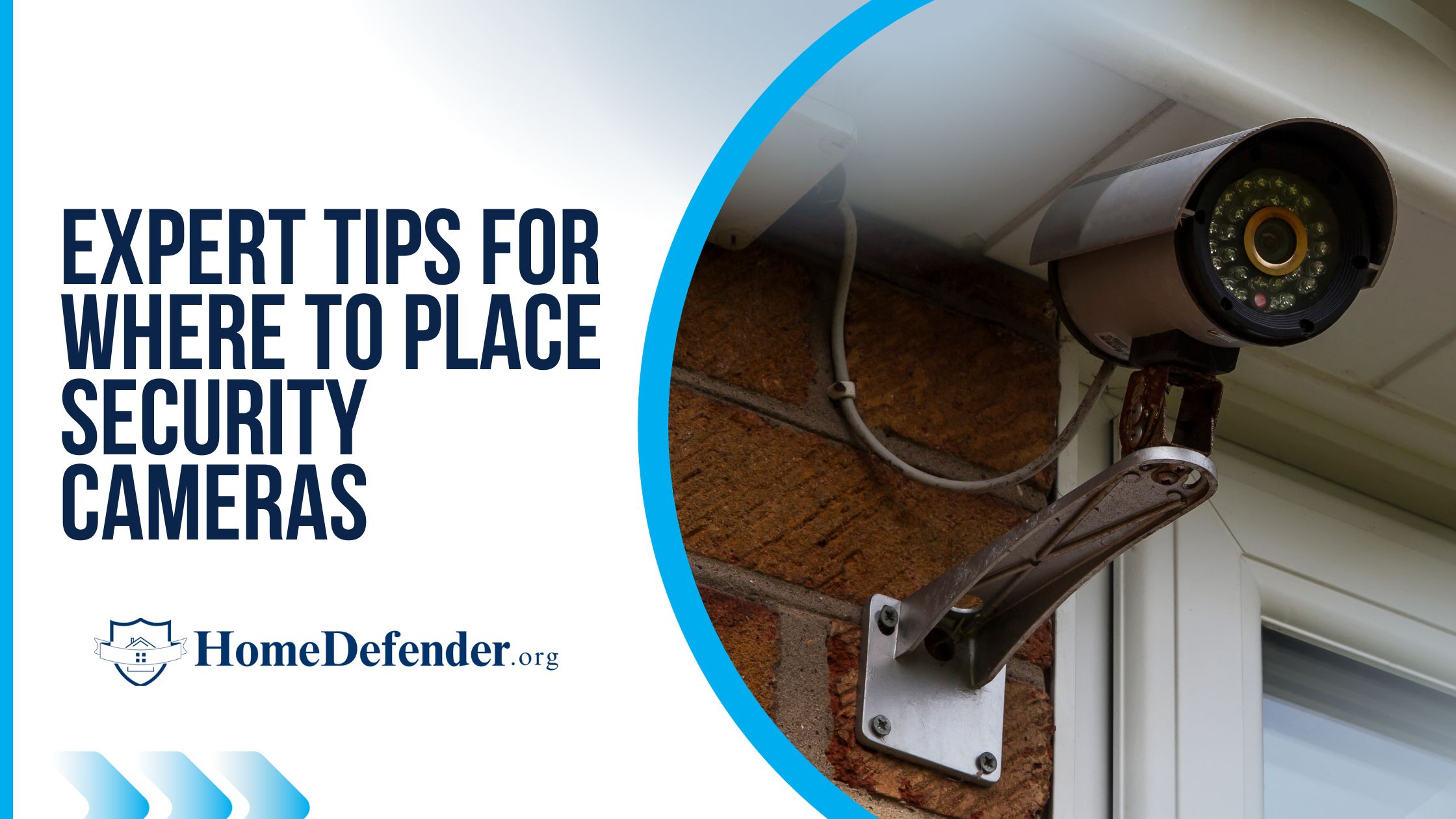Are you looking to enhance the security of your home by installing security cameras? The placement of these cameras is crucial for achieving optimal performance and maximizing their effectiveness. Dive into this comprehensive guide to discover expert tips on where to place security cameras, both indoors and outdoors, for the best results. You’ll also learn about camera positioning, Wi-Fi signal strength, legal and ethical aspects, and whether to choose DIY or professional installation.
Key Takeaways
Optimize security camera placement in key entryways, doors, garages, driveways and yards for maximum coverage.
Respect privacy by focusing on public spaces and avoid capturing neighbors’ property or private areas.
Understand federal/state laws regarding security cameras to comply with regulations & preserve privacy.
Optimizing Security Camera Placement: Key Areas to Cover
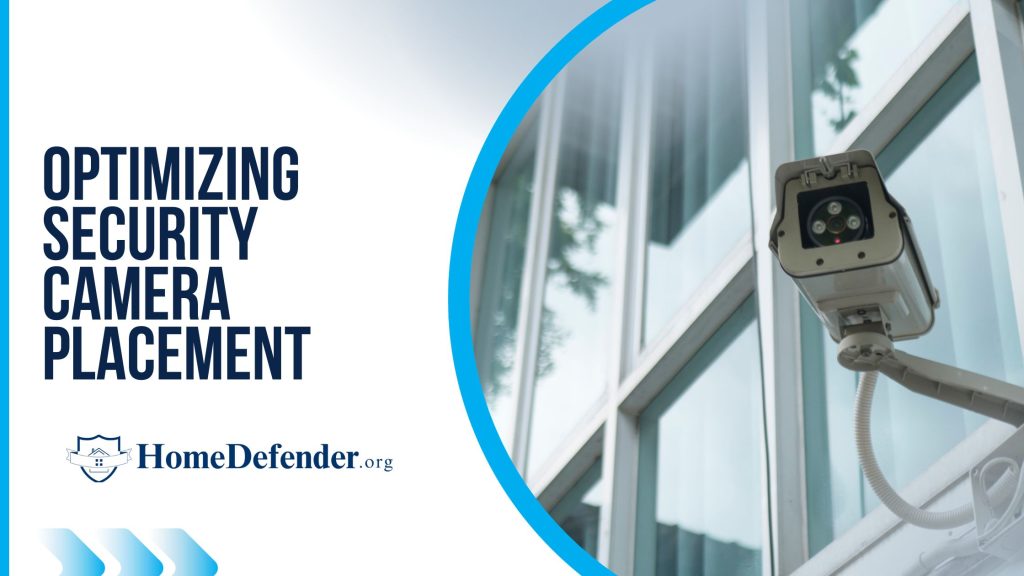
Covering key areas in and around your home helps deter potential criminals, ensuring a watchful eye on your property. Outdoor security camera placement should focus on the following areas to provide maximum coverage:
Entryways
Back and side doors
Garage
Driveway
Yard
Positioning cameras in these critical areas enables monitoring of all entry points and deters potential burglars targeting these locations.
Front Door and Entryways
Covering the front door and entryways is crucial since they serve as the primary access points for visitors, deliveries, and potential intruders. By installing a home security camera at the second-floor level, you can capture clear images of faces and clothing, providing valuable information to law enforcement if needed. Considering security camera placement laws and making your cameras inaccessible to potential vandals is also important.
Not only do security cameras at the front door help deter criminals, but they also allow you to:
Monitor your family members
Monitor babysitters
Monitor maintenance personnel
Monitor delivery personnel
Ensure the safety and security of your home with a doorbell camera. With the right home security camera placement, you can have peace of mind knowing that your property is being watched over 24/7 by home security cameras. To further enhance your home’s protection, place security cameras in strategic locations around your property.
Back and Side Doors
Back and side doors are often secondary entry points that burglars target, as they are usually less visible and more secluded than the front door. Positioning visible security cameras at these locations not only covers these crucial entry points but also deters potential intruders, who usually avoid properties with visible security measures.
To maximize the effectiveness of your security cameras at back and side doors, consider the following placement:
Position the cameras in relation to entry points, such as doors and windows, to capture any potential intruders.
Place cameras near potential targets for theft, such as valuable items or entrances to storage areas.
Ensure that the cameras cover both the front and rear yards to monitor any suspicious activity. By following these guidelines, you can ensure comprehensive coverage of your property and eliminate any blind spots for burglars to exploit.
Garage and Driveway
Garages and driveways often contain valuable items such as vehicles, tools, and equipment, making them attractive targets for burglars. Additionally, garages may serve as weak entry points into the main house if not properly secured. Installing security cameras in these areas allows for monitoring of any suspicious activity, ensuring the safety of your belongings.
When placing cameras in your garage and driveway, consider factors such as the camera’s field of view, angle, and lighting conditions. If your camera is battery-powered, pairing it with a solar panel can eliminate the need for frequent battery recharging, ensuring uninterrupted surveillance.
Yard and Perimeter
Installing security cameras around your yard and property perimeter can help detect trespassers, monitor the activities of children and pets, and provide early warning of potential threats. Covering the outdoor area of your property with cameras allows for constant surveillance of any suspicious activity without the need for personal patrols.
To ensure optimal coverage of your yard and perimeter, adjust the sensitivity of the motion sensors that activate your camera and alert you to any movement. This allows you to respond quickly to potential threats and keep your property secure at all times.
Indoor Security Camera Placement: Protecting Your Home’s Interior
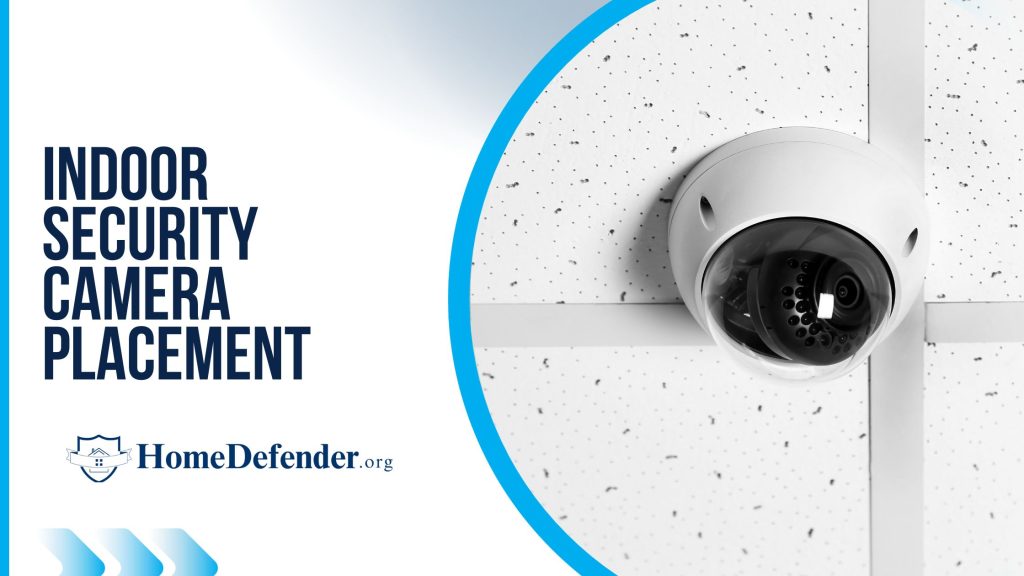
Along with crucial outdoor surveillance provided by outdoor cameras, protecting your home’s interior with strategically placed indoor security cameras is equally important. The right placement of indoor cameras can help you monitor common areas, main stairways or hallways, and ensure privacy by avoiding cameras in bedrooms, bathrooms, and other private spaces.
Covering these areas ensures a close watch on the activities inside your home, allowing for quick responses to any potential security threats with the help of a home security system.
Common Areas
Placing cameras in common areas such as living rooms, kitchens, and other high-traffic spaces allows you to monitor activity within your home, including the movements of family members, babysitters, pets, and service providers. Prioritize rooms with large ground-floor windows, as these can be potential entry points for burglars.
Installing security cameras in these shared spaces helps ensure the safety of loved ones and track any visitors or service providers entering your home. To install home security cameras, this added layer of security gives you the peace of mind that your home is protected both inside and out.
Main Stairway or Hallway
Installing security cameras in main stairways or hallways is an effective way to track movement within your home. These areas often connect different parts of the house and are frequented by family members and visitors alike. Placing cameras in these strategic locations helps monitor the movements of everyone inside your home, ensuring their safety.
Some recommended cameras for main stairways or hallways include the Vivint Outdoor Cam Pro, Arlo Pro 3 Floodlight Camera, and Lorex cameras. By choosing high-quality cameras for these critical areas, you can ensure clear footage and reliable performance in monitoring the movement within your home.
Privacy Considerations
While security cameras can enhance the safety of your home, it’s important to respect the privacy of its occupants. Avoid placing cameras in bedrooms, bathrooms, and other private spaces, as this can infringe on individuals’ reasonable expectation of privacy. Instead, focus on public spaces and entry points to monitor activity without invading privacy.
During security camera installation, care should be taken to avoid capturing neighbors’ property or private spaces, as this can infringe on privacy and may have legal repercussions. By carefully considering camera placement and respecting privacy, you can create a secure and comfortable environment for everyone involved.
Camera Positioning and Angling: Getting the Best View
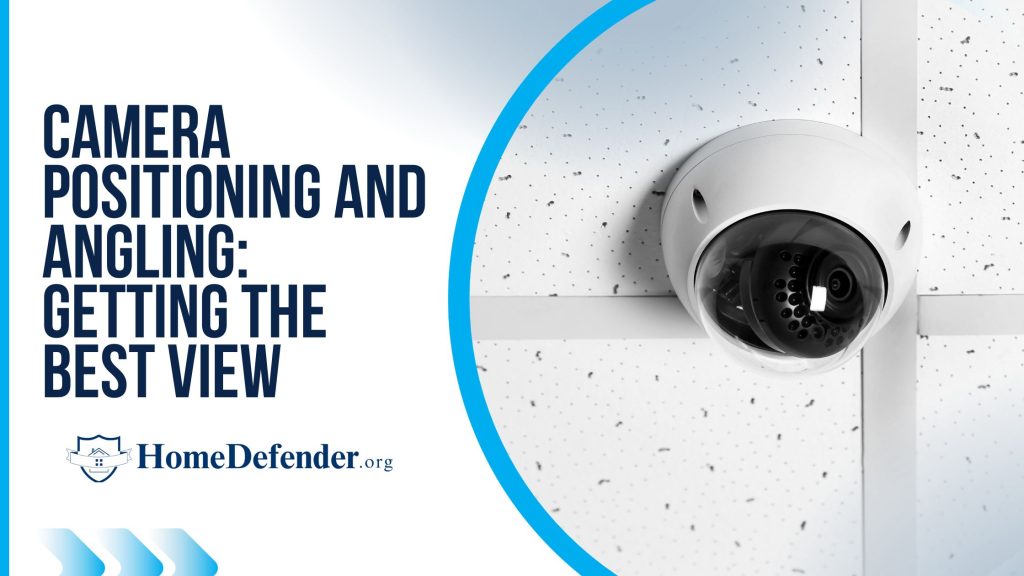
Correct positioning and angling of your security cameras is vital for optimal performance. Factors such as height, angle, and visibility significantly influence the clarity of captured images and coverage of important areas.
A careful consideration of these factors ensures your cameras provide optimal coverage and protection for your home.
Installing Cameras High
Installing cameras at a height can provide a broader field of view and effectively deter vandalism. Positioning cameras high on walls or other structures allows for wider coverage and reduces the chance of criminals tampering with or damaging your cameras.
In addition to increased coverage and deterrence, installing cameras high up can also reduce interference from other objects, improve image quality, and enhance safety. Careful consideration of camera height and positioning optimizes the performance of your security system and guarantees the best possible protection for your property.
Correct Camera Angles
Ensuring the correct camera angles is essential in capturing clear images and adequately covering essential areas of your property. To optimize image quality, make sure that the camera angle is neither too close nor too far from the subject and provides a wide field of view.
Positioning your cameras at the most effective angles helps capture identifiable images of potential intruders, providing valuable information for law enforcement. With the right camera angles, your security system can provide comprehensive coverage of your property and help keep your home safe and secure.
Balancing Visibility and Concealment
Striking a balance between camera visibility and concealment is crucial in deterring potential criminals while avoiding detection. To optimize this balance, consider positioning cameras at a height, incorporating measures to obscure cameras from potential intruders, and combining visible and covert cameras.
Utilizing natural elements such as bushes, trees, or architectural features to partially conceal your cameras can also help maintain this balance. By carefully considering camera placement and visibility, you can create an effective security system that deters criminals without drawing unwanted attention.
Wi-Fi Signal Strength and Camera Performance
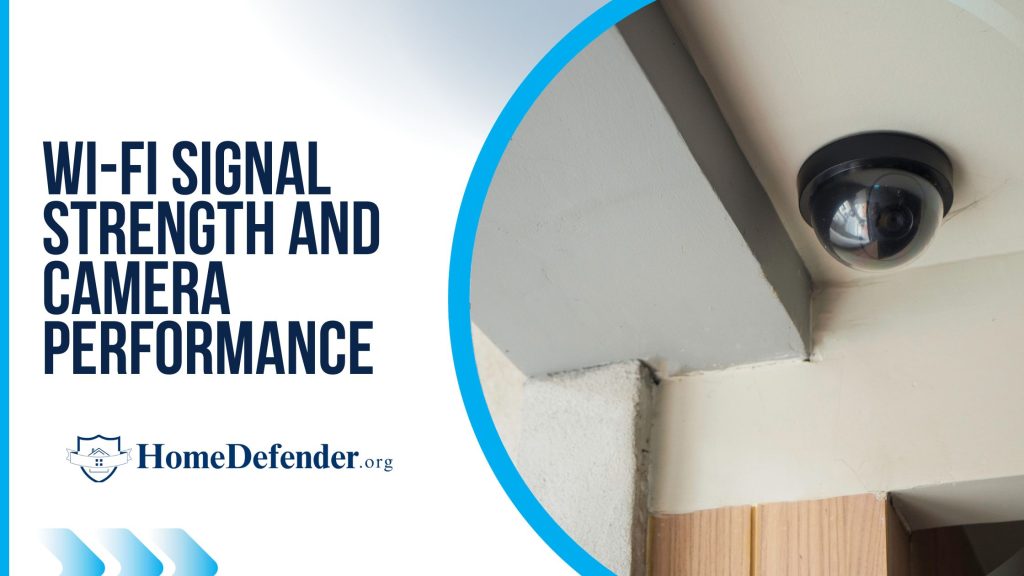
Wi-Fi signal strength significantly impacts the performance of wireless security cameras. A strong signal ensures:
Consistent access to the network
Optimal transmission of footage
Reliable streaming
Faster data transfer speeds
Superior video quality.
The following section explores considerations for wireless camera placement and provides tips for enhancing Wi-Fi connectivity.
Wireless Camera Considerations
Considering the placement of wireless cameras in relation to Wi-Fi signal strength is crucial for their optimal performance. Poor signal strength can result in unreliable streaming and lower video quality, so it’s important to ensure that your cameras are placed in areas with good to excellent Wi-Fi signal strength.
To maximize Wi-Fi connectivity, follow these tips:
Position your router in an open space, clear of walls and other obstructions.
Use a router with dual-band technology.
Use a router with a high-gain antenna.
Following these tips can help improve signal strength and ensure reliable camera performance.
Tips for Improving Wi-Fi Connectivity
Enhanced Wi-Fi connectivity is crucial for reliable performance of your security cameras. One strategy to enhance connectivity is to position your router in a central location, free of walls and other obstructions that may interfere with the signal. Utilizing a Wi-Fi extender or repeater can also help increase the range and strength of your Wi-Fi signal, ensuring consistent performance for your cameras.
Monitoring Wi-Fi performance is crucial in guaranteeing that your security cameras have a strong and dependable signal. Implementing these tips and regularly assessing your Wi-Fi signal strength ensures optimal performance from your security cameras.
Legal and Ethical Aspects of Security Camera Placement
Awareness of legal and ethical aspects is crucial when installing security cameras to avoid infringing on anyone’s privacy or breaking any laws. The upcoming section delves into federal and state laws regarding security camera placement and outlines ways to respect neighbors’ privacy while maintaining effective surveillance.
Federal and State Laws
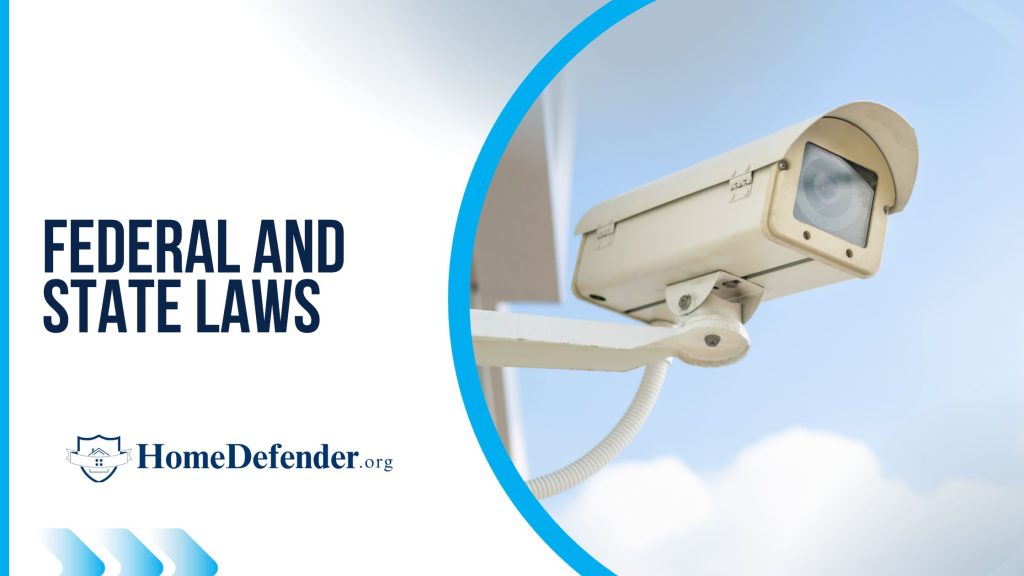
Comprehending federal and state laws concerning security camera placement is vital to avoid legal complications. Generally, it is not permissible to place cameras in areas where there is a reasonable expectation of privacy, such as bathrooms, bedrooms, and changing rooms.
Additionally, some states have laws that mandate security cameras to be placed in certain locations, like banks and other financial institutions. By familiarizing yourself with the laws in your area, you can ensure that your security camera placement is compliant with regulations and does not infringe on anyone’s privacy.
This not only protects you legally but also helps maintain a harmonious relationship with your neighbors and community.
Respecting Neighbors’ Privacy
During security camera installation, it’s important to respect neighbors’ privacy by ensuring cameras do not capture their property or private spaces. To achieve this, carefully consider the positioning and angle of your cameras, making sure not to point them towards your neighbors’ property, including their roof, windows, or yard.
By respecting your neighbors’ privacy and ensuring that your cameras do not capture their property, you can maintain a peaceful and cooperative relationship with those living around you. This not only benefits you legally but also fosters a sense of community and mutual respect among neighbors.
DIY vs. Professional Installation: Making the Right Choice
The decision between DIY and professional installation can pose a challenge when installing security cameras. Both options have their pros and cons, and the right choice depends on your specific needs and budget.
This section will delve into the pros and cons of both DIY and professional installation, aiding you in making an informed decision.
Pros and Cons of DIY Installation
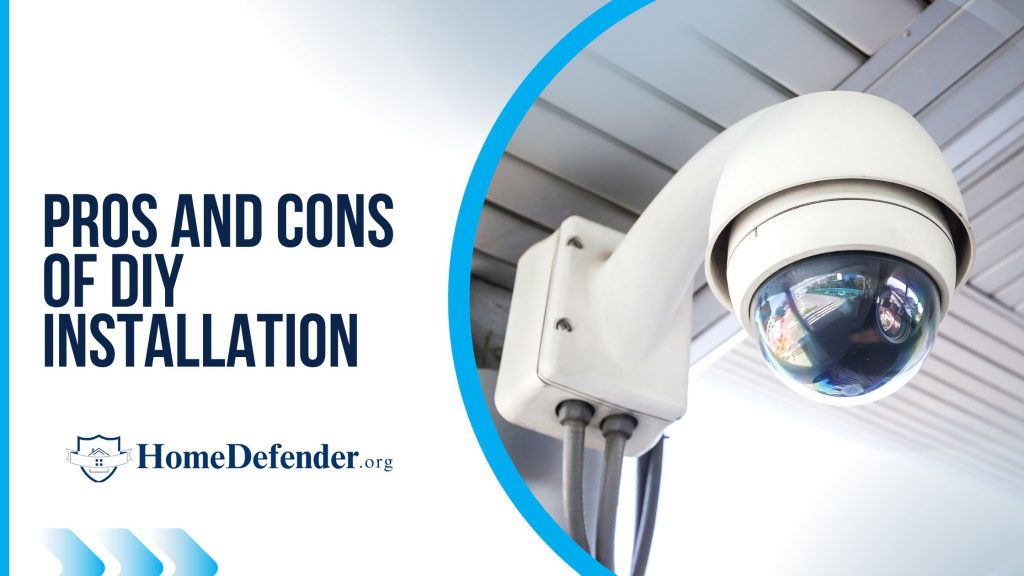
DIY installation, a cost-effective solution for installing security cameras, allows you to save on installation fees by doing the work yourself. However, DIY installation may present some potential difficulties, such as:
Being time-consuming
Requiring technical knowledge
Any errors in the installation process may result in poor camera performance, which can compromise your home security.
Despite these challenges, DIY installation can be a viable option for those who are confident in their technical abilities and are willing to invest the time and effort required. By carefully planning and executing your installation, you can achieve satisfactory results while saving money on professional fees.
When to Choose Professional Installation
For those preferring a quicker and more reliable option, professional installation might be the right choice for security camera installation. Professionals can ensure that your security system is installed correctly and efficiently, minimizing safety risks and providing a superior standard of quality. While professional installation can be more expensive than DIY, the added peace of mind and assurance of proper installation may be worth the cost for some homeowners.
Ultimately, the decision between DIY and professional installation depends on your individual needs, budget, and confidence in your technical abilities. By carefully considering the pros and cons of each option, you can make the right choice for your security camera installation and ensure the best possible protection for your home.
Summary
In conclusion, security camera placement is an essential aspect of home security, and proper placement can significantly enhance the effectiveness of your surveillance system. By covering key areas both indoors and outdoors, positioning and angling cameras correctly, ensuring strong Wi-Fi connectivity, and respecting legal and ethical guidelines, you can create a comprehensive security system that keeps your home and loved ones safe. Whether you choose DIY or professional installation, remember that a well-executed security camera system is a critical investment in your safety, security, and peace of mind.
Frequently Asked Questions
Where is the best place to put security cameras?
Security cameras should be placed in front of the door, at second-floor level to avoid being knocked out, by easy access points such as windows and backdoors, over driveways and garages, and in front and backyards. These are the best spots to capture footage of any burglars attempting to break in.
Where not to install security cameras?
When installing security cameras, be mindful of areas that may give people a reasonable expectation of privacy. Avoid pointing outdoor cameras at neighbors’ windows, and keep indoor cameras out of bedrooms and bathrooms.
How many security cameras do I need around my house?
For a home security system, most people typically need between 2 and 6 cameras. This includes 1-2 outdoor cameras for the front and back of the house, a doorbell camera to monitor the front door, and an indoor camera to keep an eye on valuables, kids, or pets.
What are the key areas to cover with security cameras for optimal performance?
For optimal performance, security cameras should be installed to cover key areas such as entryways, back and side doors, garage, driveway, yard, and common indoor spaces and stairways/hallways.
What factors should be considered when positioning and angling security cameras?
When positioning security cameras, ensure optimal height, angle, and visibility for clear images and comprehensive coverage.


